Ready for some pub trivia? Here we go.
1) Which team is currently second in La Liga in the goals scored statistic?
2) Which two teams finished round 12 as the joint leaders in the fewest goals conceded stat category?
If your answer to the first question was Villarreal, you’re correct. For the second question, you probably selected Atlético Madrid, but did you pair them with Athletic Club?
As Villarreal and Athletic kicked-off this weekend, odds of a tight affair were high. Could Villarreal’s attacking rotations unsettle Athletic? Could Athletic grab a goal and lockdown Villarreal to steal three road points?
A hard-fought battle, which will surely leave Villarreal frustrated with the officiating, ended in a 0-0 draw.
This tactical analysis will examine how Villarreal’s attacking rotations attempted to unsettle the Athletic defence and how the teams engaged each other in Villarreal’s Zone 14. We’ll also provide an analysis of how Athletic’s defensive tactics successfully earned the team a road point.
Lineups
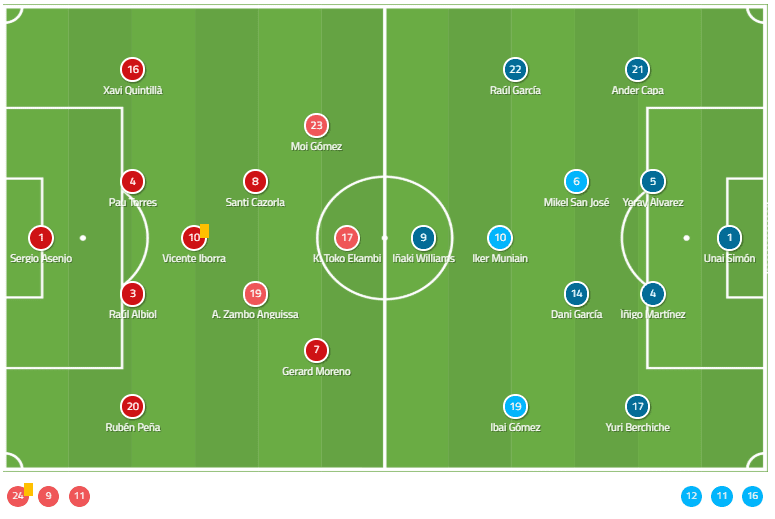
Javi Calleja’s Villarreal side set out in a 4-1-4-1. The relationships between Moi Gómez and Santi Cazorla on the left side of the midfield, as well as André-Frank Zambo Anguissa and Gerard Moreno on the right, were key emphasize of Calleja’s approach. Their ability to rotate with each other and Karl Toko Ekambi gave them numbers up high and allowed them to probe the Athletic defence. Vicente Iborra played behind the midfield four, providing coverage for Raúl Albiol and Pau Torres.
Gaizka Garitano sent his Athletic side out in a very compact 4-2-3-1. Iñaki Williams drew the start up top, playing in front of Raúl García, Iker Muniain and Ibai Gómez. Dani García and Mikel San José were given the task of protecting the backline and Unai Simón, who was the Man of the Match.
Villarreal’s attacking rotations
Knowing that Athletic would keep a compact shape for the majority of the game, Villarreal looked to unsettle them with intricate movements off the ball. The chemistry of the midfielders and Ekambi to constantly rotate zones was fascinating. Cazorla and Gómez were especially active, frequently switching between the wing and half-space. When Xavi Quintillá made his way forward, Gómez would typically move from the wing to the center, just underneath Ekambi, while Cazorla started in the half-space with the intent to make a run into the central channel to find his shot.
Though the incredible understanding between the Villarreal front five keeps us from an exhaustive list of rotation cues, we can glean a few from the film.
Ekambi’s movement from the wings into the half-spaces cleared space for Moreno, Cazorla and Gómez. As the forward left his central space, typically the nearest midfielder made a darting run into the middle. Another simple rotation was one player simply taking a teammate’s space, cueing him to switch.
In this game, some of the more intricate rotations involved Moreno and Gómez. Even though they were technically the wide midfielders, they kept popping up in the middle of the pitch. As the outside-back moved higher up the pitch, they pushed their corresponding wide midfielder central. Moreno and Gómez usually started wide and then looked to move centrally as Cazorla or Anguissa moved into the half-space.
For the sake of example, if play started on the left, Cazorla would move into the half-space and Ekambi would try to pull the central defenders into the middle. If a gap emerged between the right and right-centre-backs, Gómez would run into that space. While that was happening, Moreno would leave the right-wing for Rubén Peña and move centrally to play under Ekambi. If play was recycled, Moreno and Gómez would return to the wide areas and await the next cue.
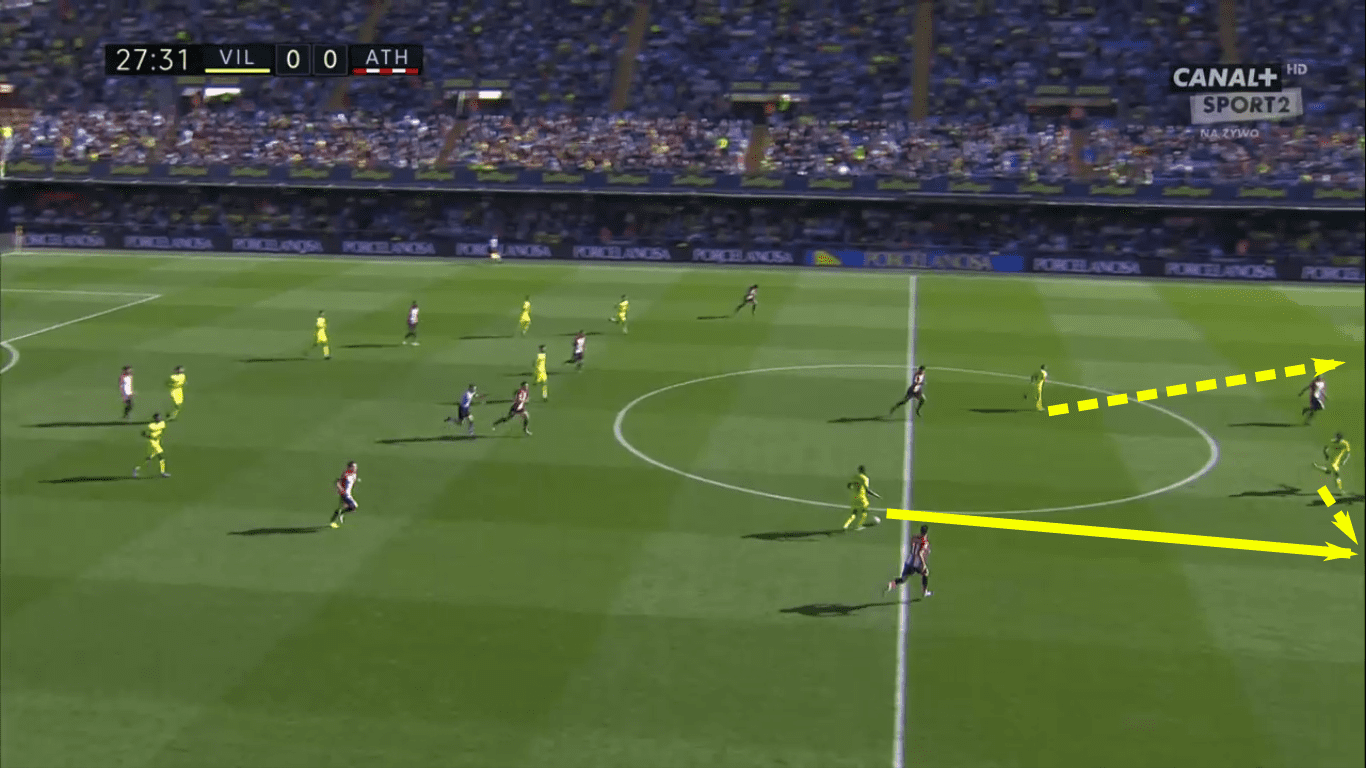
A Villarreal possession in the 28th and 29th minutes shows the frequency and complexity of their attacking positional rotations. The play starts with Ekambi dropping into the midfield to offer an outlet. As he receives in space, he makes his turn upfield and identifies his runners, Cazorla to his left and his right-midfielder, Moreno, starting from a central position moving into the right half-space. He opts to play Moreno, who is immediately pressed by two defenders. Moreno keeps his composure and protects the ball, buying his teammates additional time to get forward in the attack.
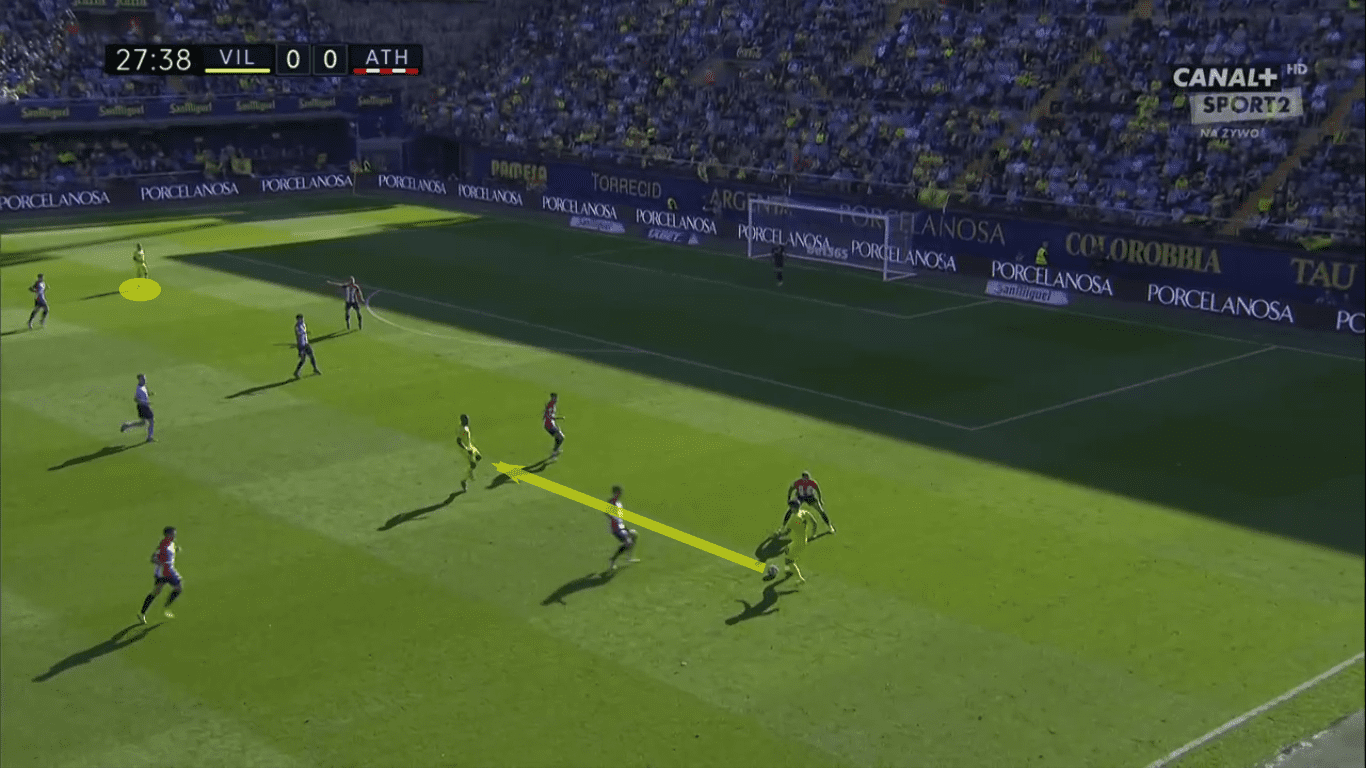
Athletic recover quickly, but Ekambi cleverly moves against their momentum to offer a passing lane.
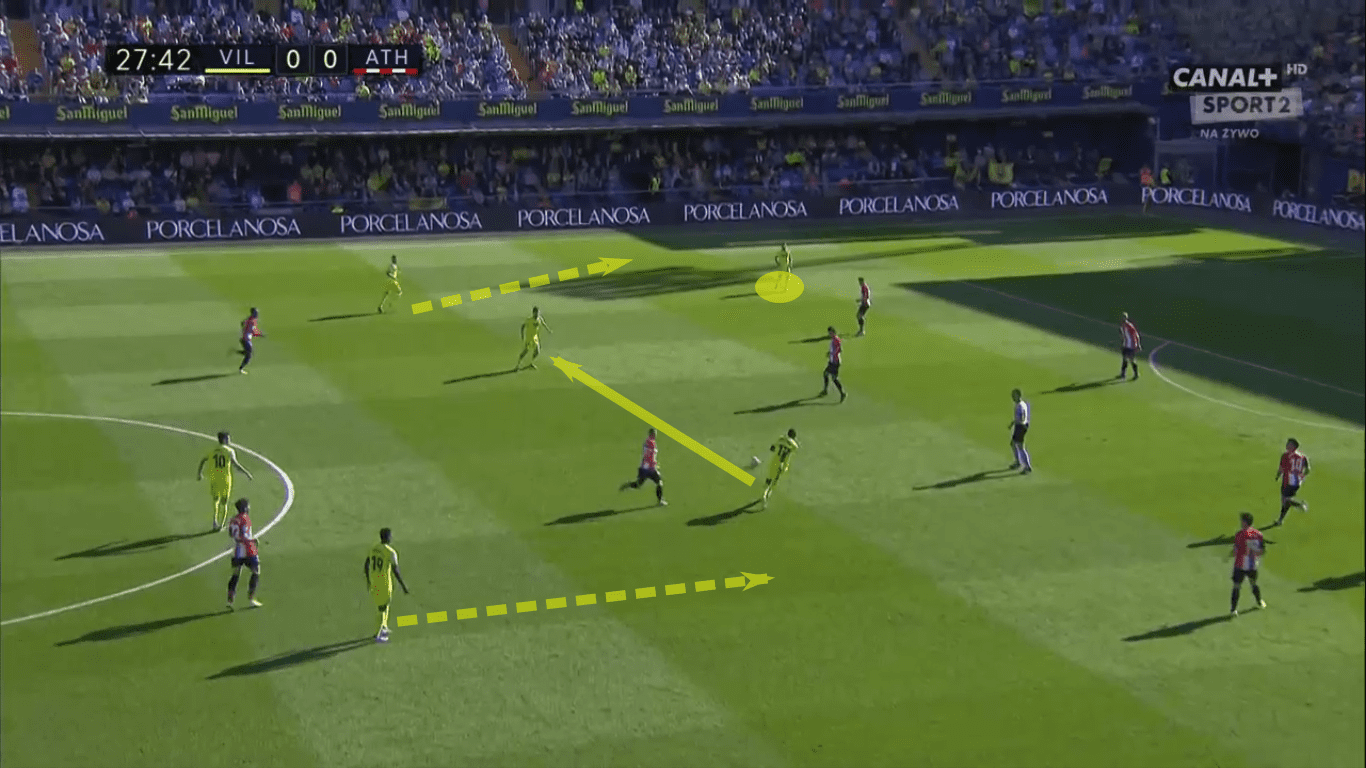
Moreno plays centrally to Ekambi, who plays square to Gómez.
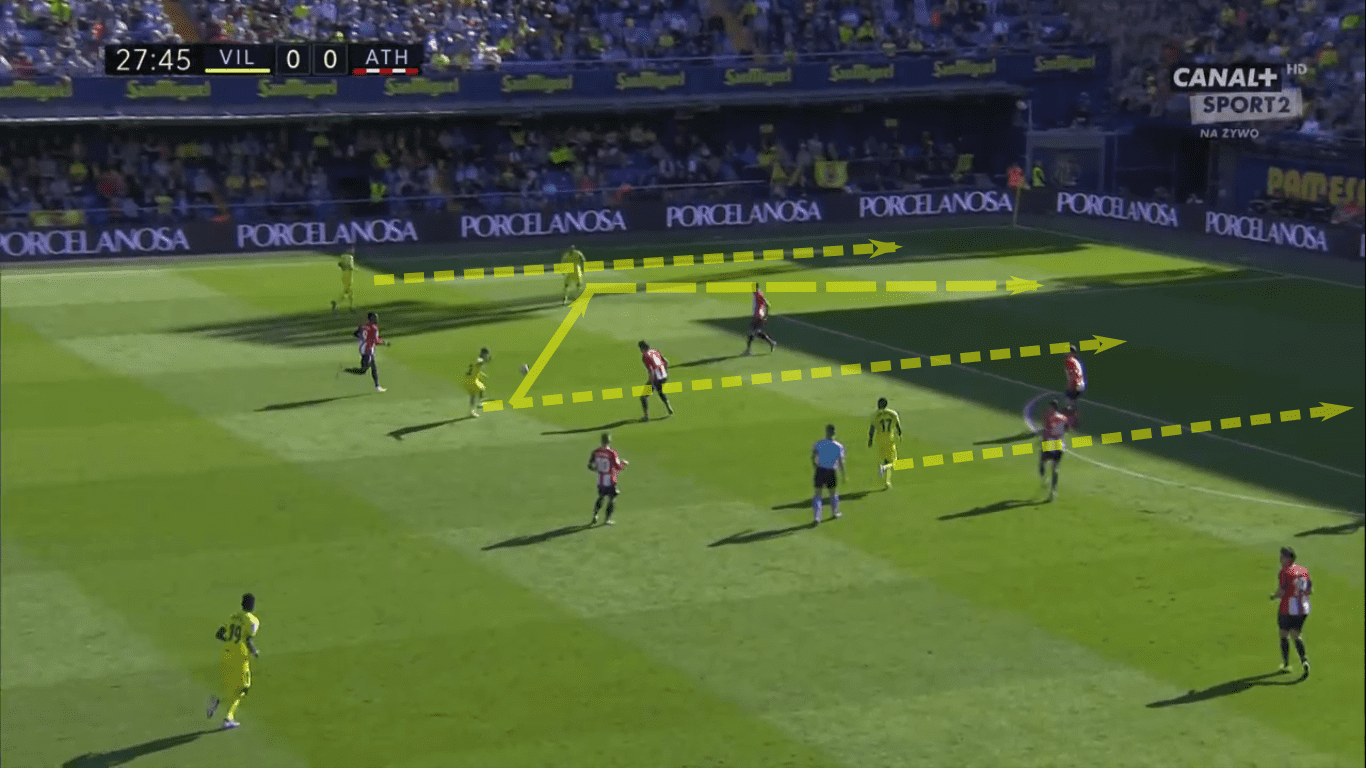
Athletic has a momentary numerical advantage, but, rather than directly attacking those numbers, Cazorla stays wide and Gómez plays the safe ball. As the exchange happens, Ekambi moves higher up the field while Anguissa remains behind the ball.
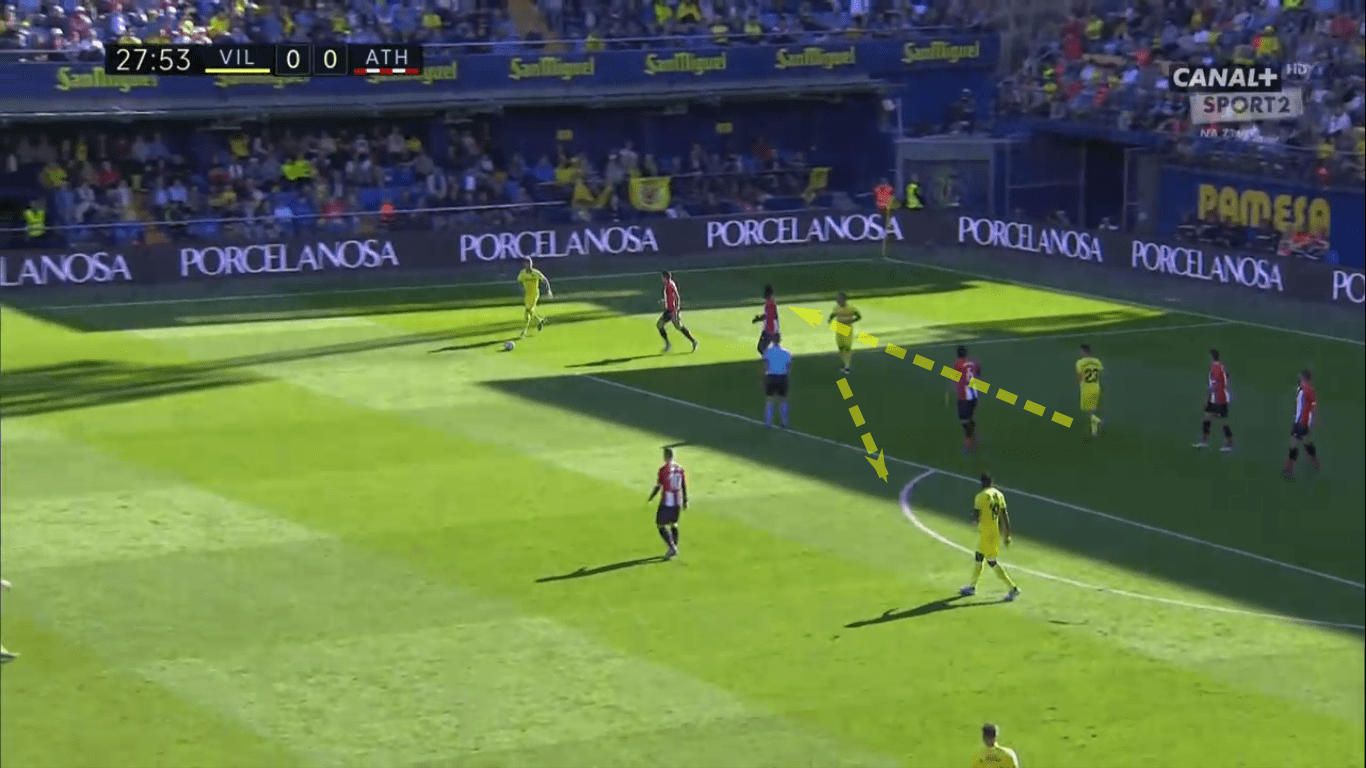
Cazorla drops the ball to Quintillá, who plays negative to recycle play. As Quintillá passes the ball, Cazorla recovers to a central position and Gomez moves back to the left-wing. After Quintillá played back, Villarreal tried to find Gomez, who had space on the wing, but a block forces play backward.
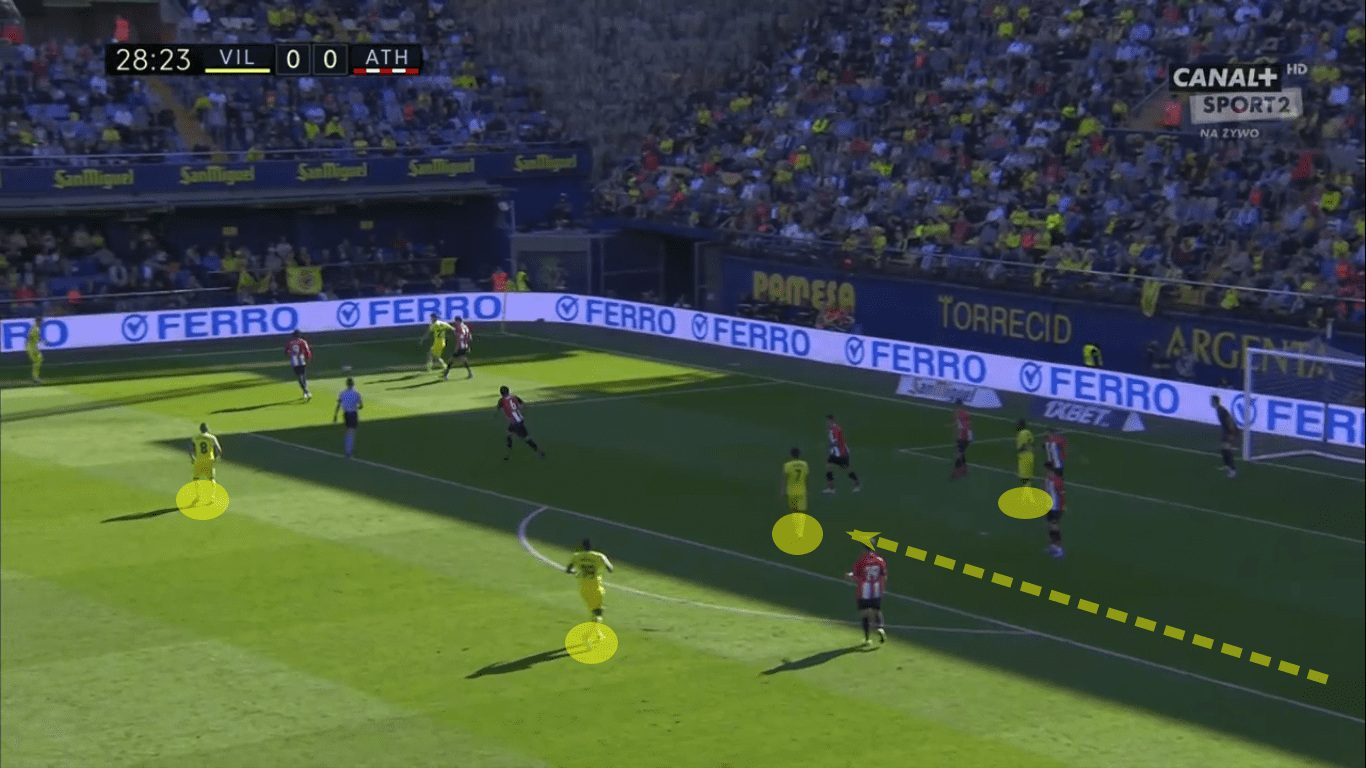
30 seconds later, Villarreal returned to Gomez in the left-wing. In this shot, notice the rotation in the box. The right-back, Peña is off-screen to the right, offering width. As he makes his way higher up the field, he releases Moreno to move centrally to play off of Ekambi. Rather than staying in a standard back-post attacker role, Moreno drifts further into the central channel to find a soft space in the defence. Villarreal finished the possession with a cross. Ekambi won the header, but sent it harmlessly into the hands of Simón. Moreno made the run behind him and had momentum towards goal. Had the cross reached him, he would have offered a more challenging shot.
Battling for Zones 14 and 17
Villarreal’s Zone 14 is the central channel of the field, 21-40 metres from the Athletic goal. Their Zone 17 rests between Zone 14 and the Athletic goal. These zones offer the highest success rates for shots on target. The team is defence desperately attempts to control these areas while the attacking team looks for any kind of gap to get through.
From the start, Athletic took control of Zone 17, preventing penetration into this area with a compact backline and midfield coverage. Though Villarreal’s rotations meant they were running into Zone 17, what they managed to do was create space for the midfielders to take shots from Zone 14.
When Villarreal’s wide attacking midfielders ran into Zone 17, they were pushing Athletic’s backline closer towards their own goal. Driving runs and passes deep into the half-space forced Athletic’s backline to make recovery runs towards their goal. To counter the present threat, the Athletic midfield would overload near the ball, leaving gaps in Zone 14. In those instances when Athletic failed to intercept the pass, the backline was ready to come forward to contest the shot. Athletic seemed willing to concede space in Zone 14 to protect Zone 17 and pressure the ball carrier. On the flipside, Villarreal was happy to take it’s chances from the top of the box.
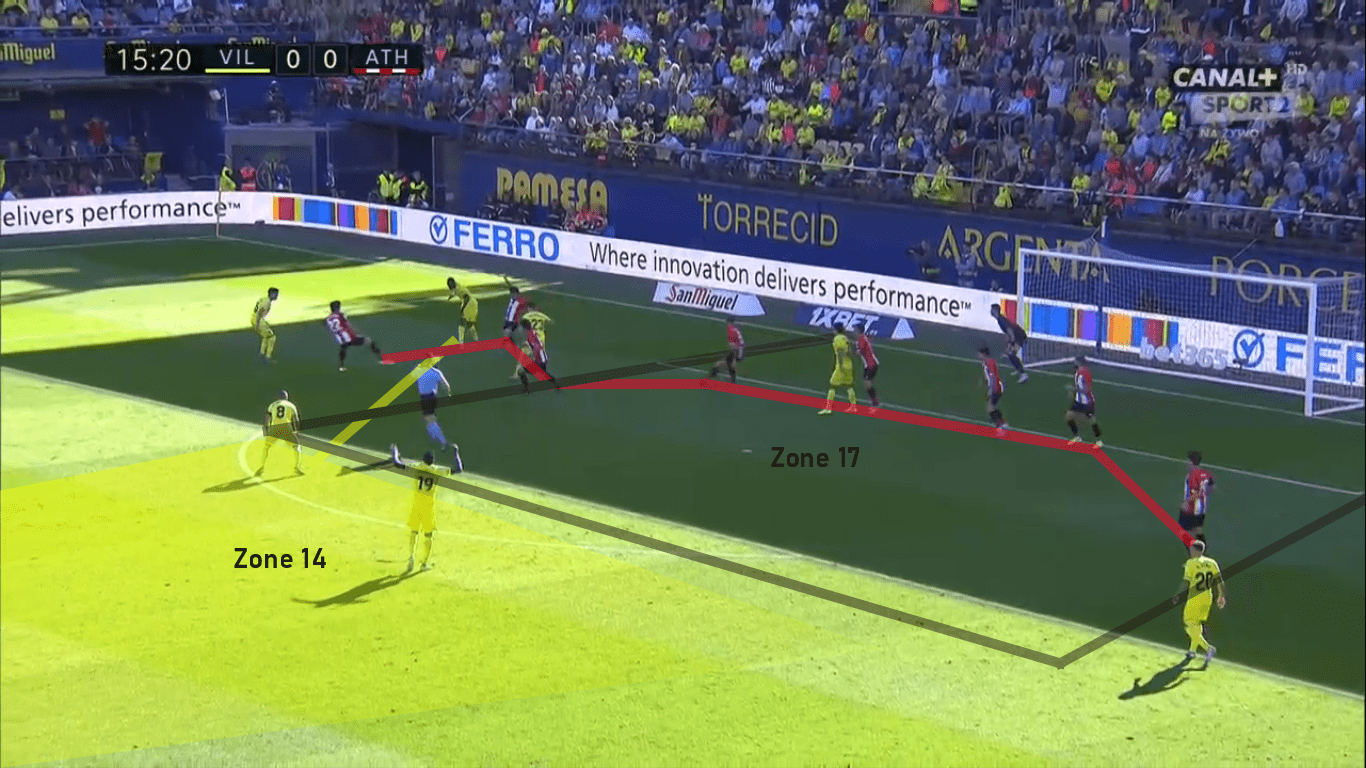
In this example, Cazorla takes a shot from Zone 14. Simón makes a brilliant save, pushing the ball wide of the net. Villarreal gains possession of the rebound, committing runners high into the box. As the Athletic defenders scramble to get behind the ball, Cazorla and Anguissa remain at the top of the box. The ball is played negative to Cazorla, who takes a touch and fire well high of the target as the Athletic defence quickly closed him down.
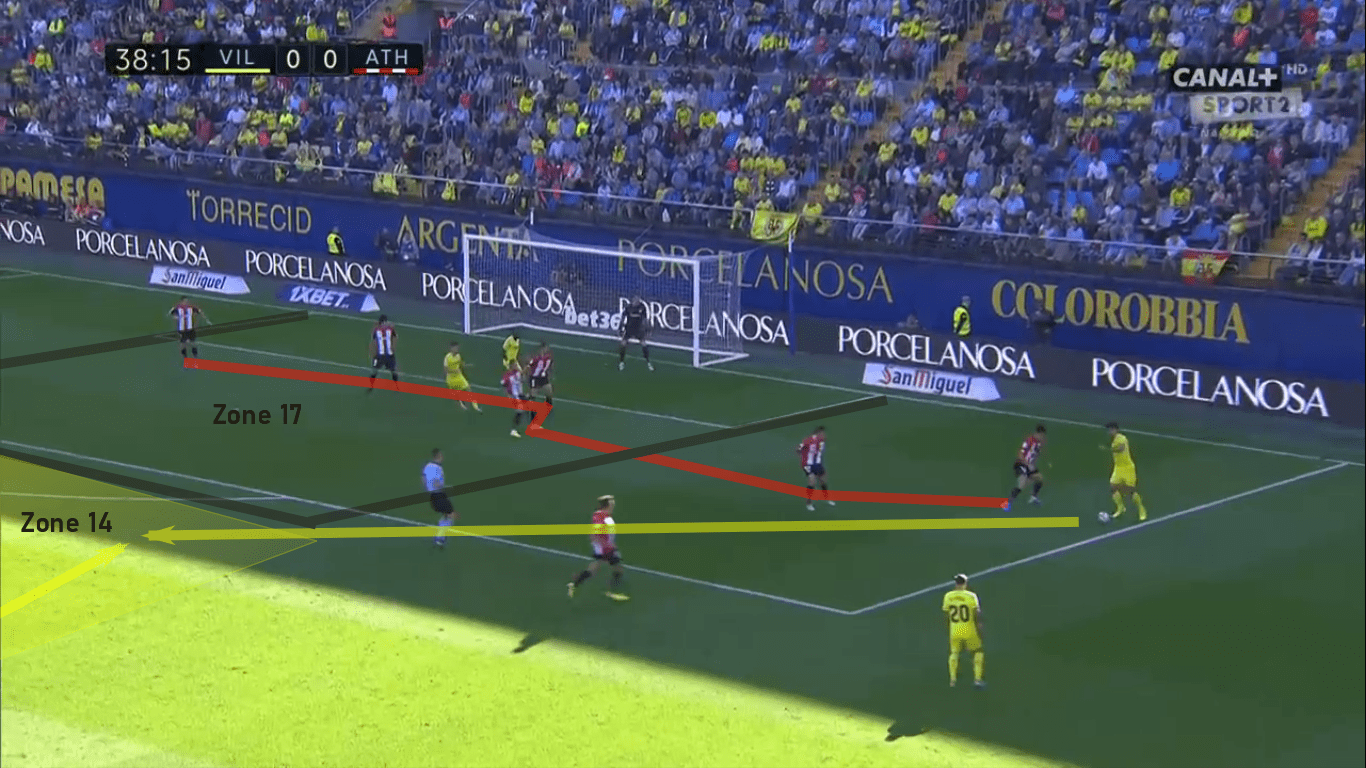
Later in the half, Ekambi was able to turn on his defender and drive centrally, forcing the Athletic defence to slide to the middle. Ekambi found Moreno out wide. Moreno drove towards the end line, cutting back six-metres out. As he made that driving run, Ekambi and Gómez made hard runs into the goalmouth, drawing the defence back with them. That movement opened up the negative pass to Anguissa, who’s is off-screen in Zone 14. Anguissa takes the first time shot as Yeray Álvarez quickly closes his space. The result is a comfortable save for Simón.
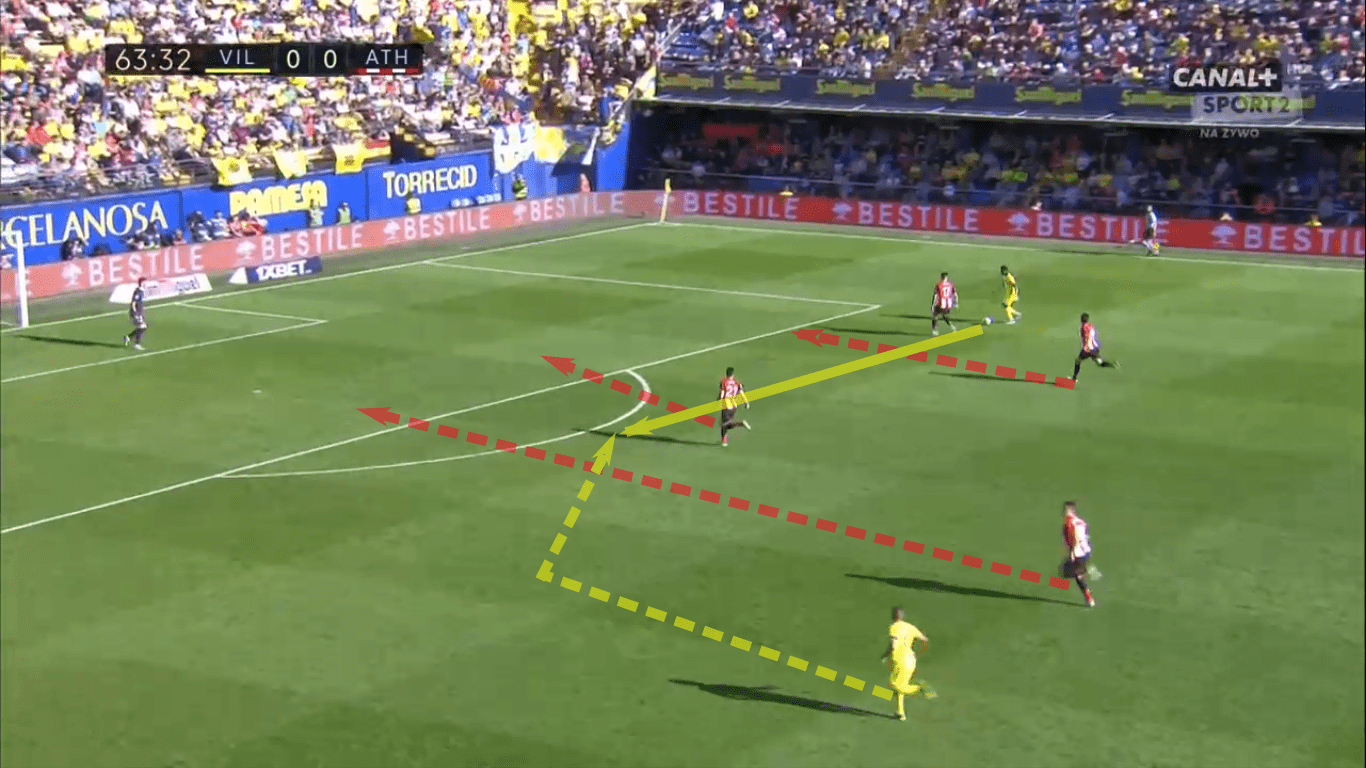
In the final example, Villarreal defended a set-piece and sprung the counterattack. Samuel Chukwueze, who had just subbed on, delayed the attack as three Athletic defenders recovered their ground. You can see Dani García glance over his shoulder to identify Cazorla, who was making a straight run at the time. García sees the run and decides to continue a straight run of his own while returning his gaze to the ball.
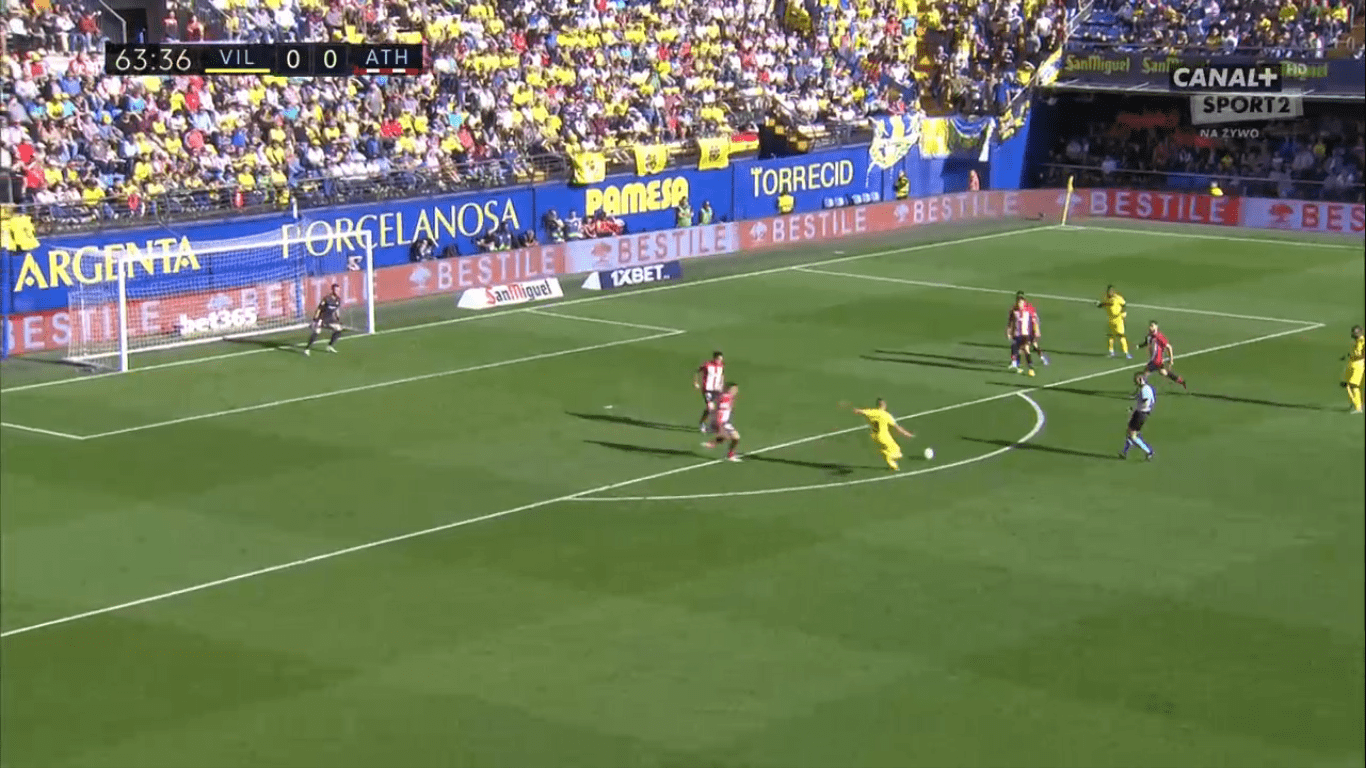
Cazorla notices the straight run of his defender, so, as García turns his head back to the ball, Cazorla curves his run into Zone 14. Chukwueze patiently waits for his teammate to make his way to the top of the box, then delivers a pass right into his path. Cazorla hit it well, but pushed his bent effort just wide of Simón.
Athletic’s defensive discipline
12 rounds are in the books and Athletic has conceded just seven goals. At the heart of this league-leading defensive statistic are the commitments to getting numbers behind the ball and compact team shape to limit threats. When Villarreal progressed into or near the opposition box, Athletic’s backline typically maintained a 15-metre range from one outside-back to the other.
With the middle locked down, Athletic forced play into the half-spaces and wings. One holding midfielder and the attacking midfielder on that side engaged in the press. If numbers necessitated further support, the other holding midfielder might go in support while the central attacking midfielder recovered to the middle to negate Cazorla or Anguissa. Even if the midfielders were stretched wide and conceded the middle, Athletic’s backline maintained proper body orientation, ready to step forward to pressure the shot and limit the angle to goal.
Athletic’s defensive work was top-class in this game. It’s management of space reduced Villarreal to difficult penetrating passes and half-chances from distance. Rather than looking at a clear defensive lock down, we’ll analyse a sequence where Athletic was most stretched, yet managed to contain the threat.
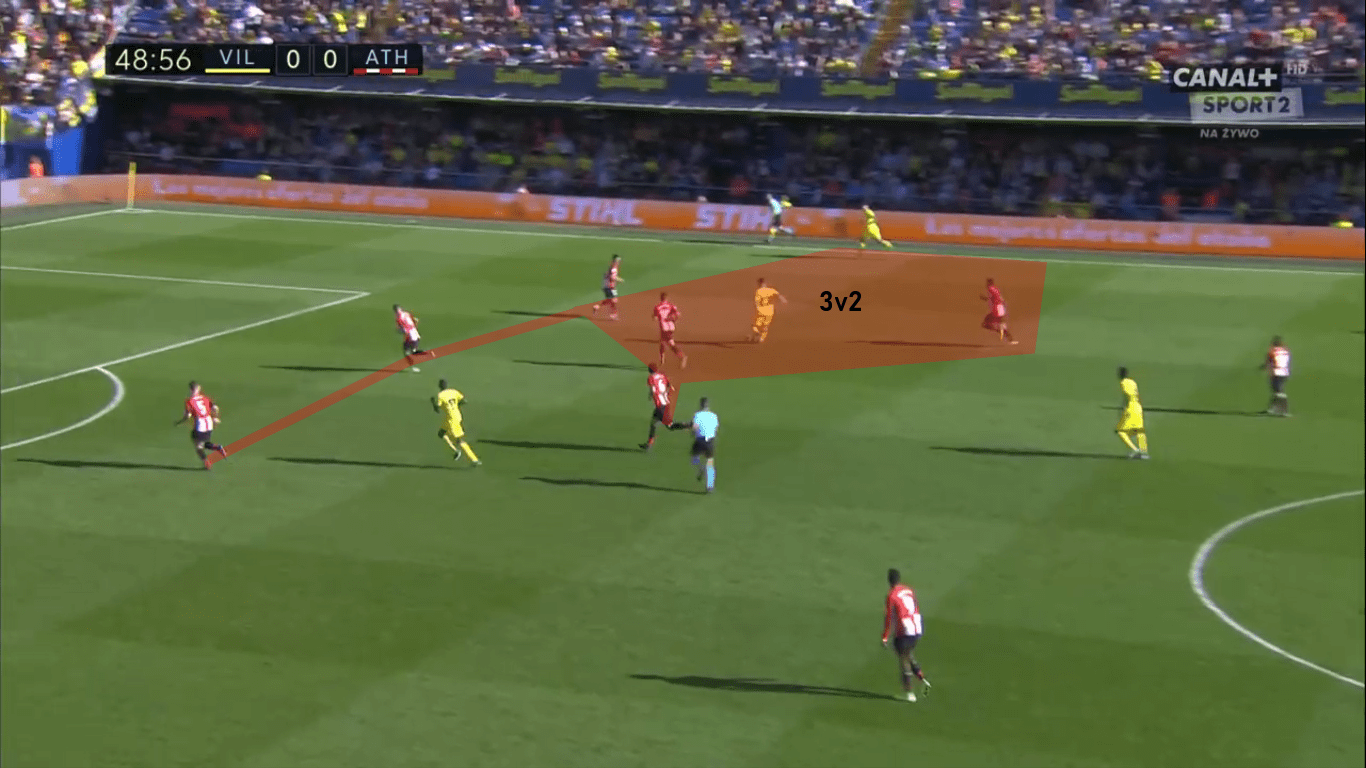
As you can see, Athletic moved numbers behind the ball as it was played wide. A disciplined defensive approach was central to their tactics in this game. It was rare to see them reduced even to numerical equality behind the ball.
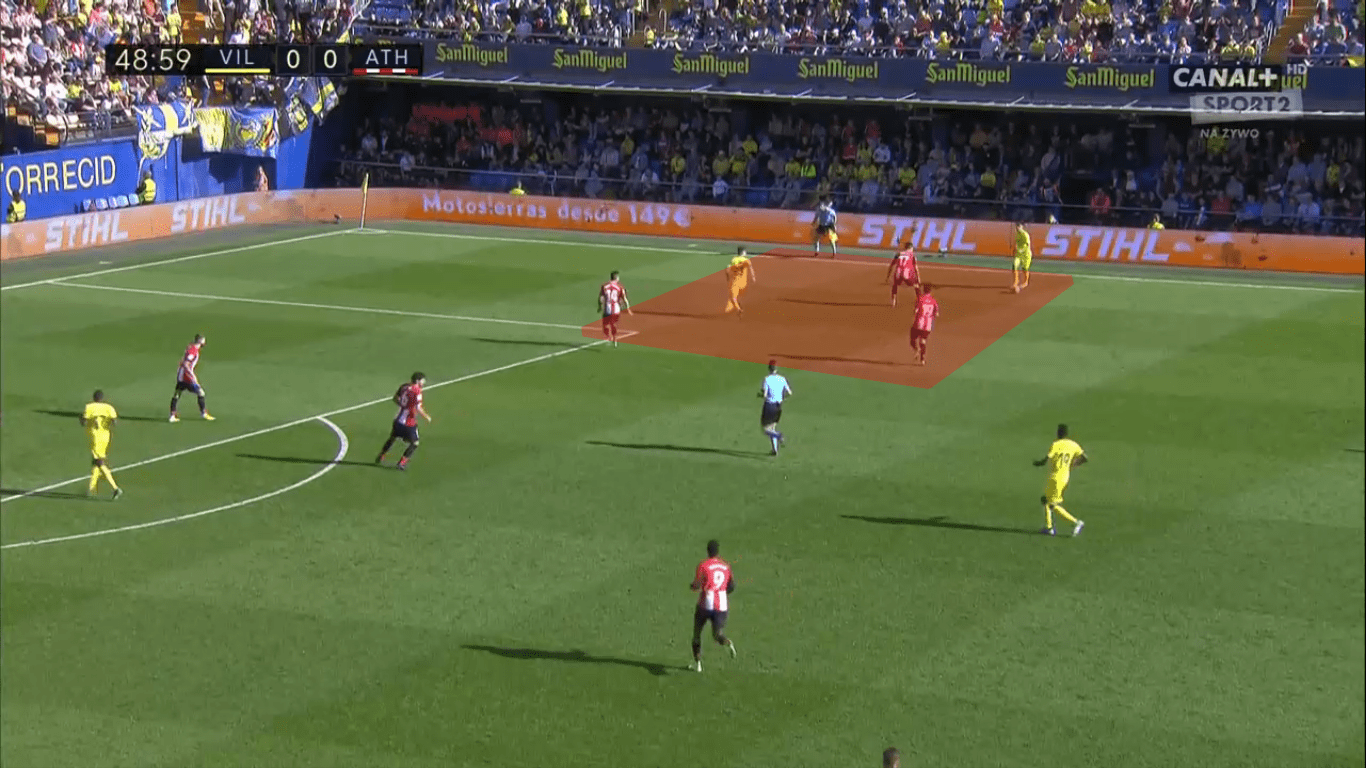
Yuri Berchiche applied pressure on the ball, Dani García offered cover while tracking the runner and Gómez recovered from a higher position to offer numerical superiority. Meanwhile, Williams tracked back to switch defensive responsibilities with Raúl García and San José offered support in the middle.
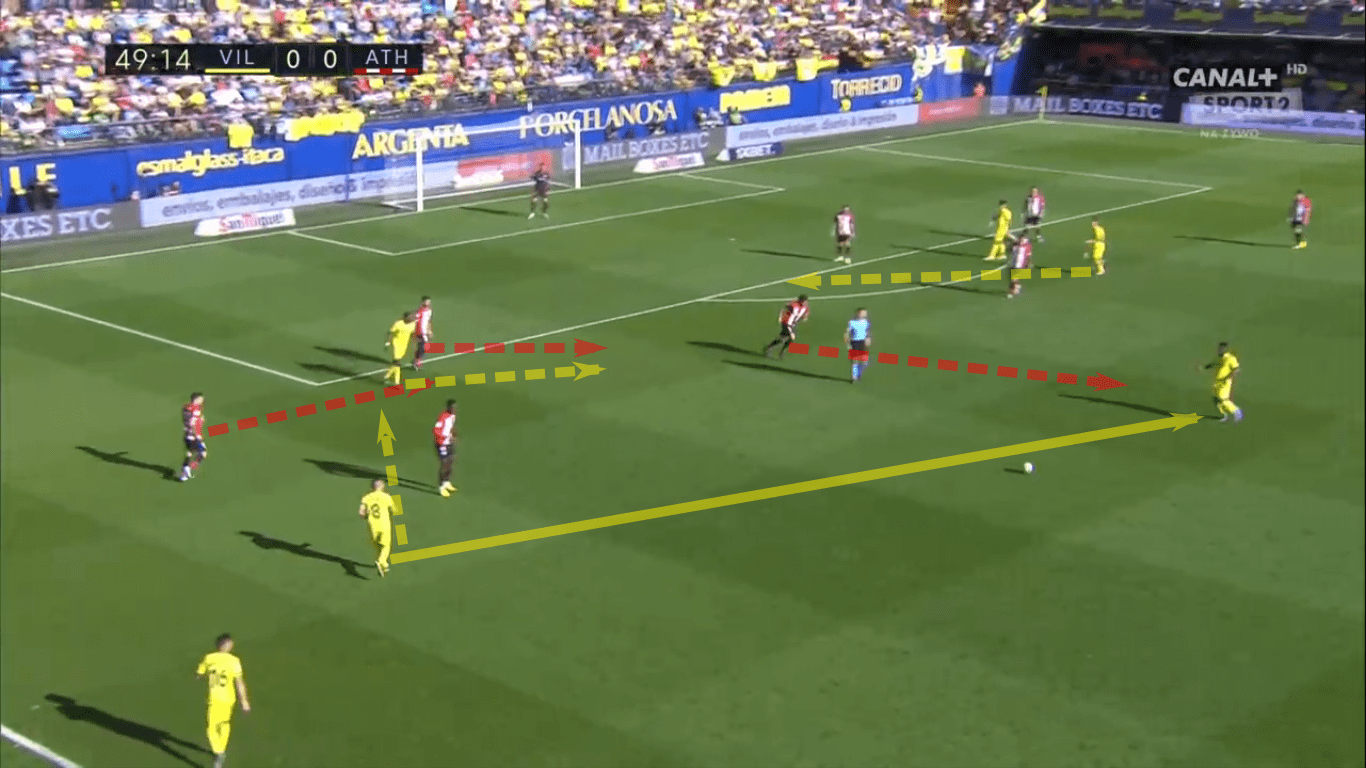
Play was recycled and switched before Cazorla played centrally to Anguissa. San José stepped up to quickly apply pressure. If he hadn’t, he would have left a massive gap for Anguissa to play a penetrating pass. You can already see a run into that space in the early stages.
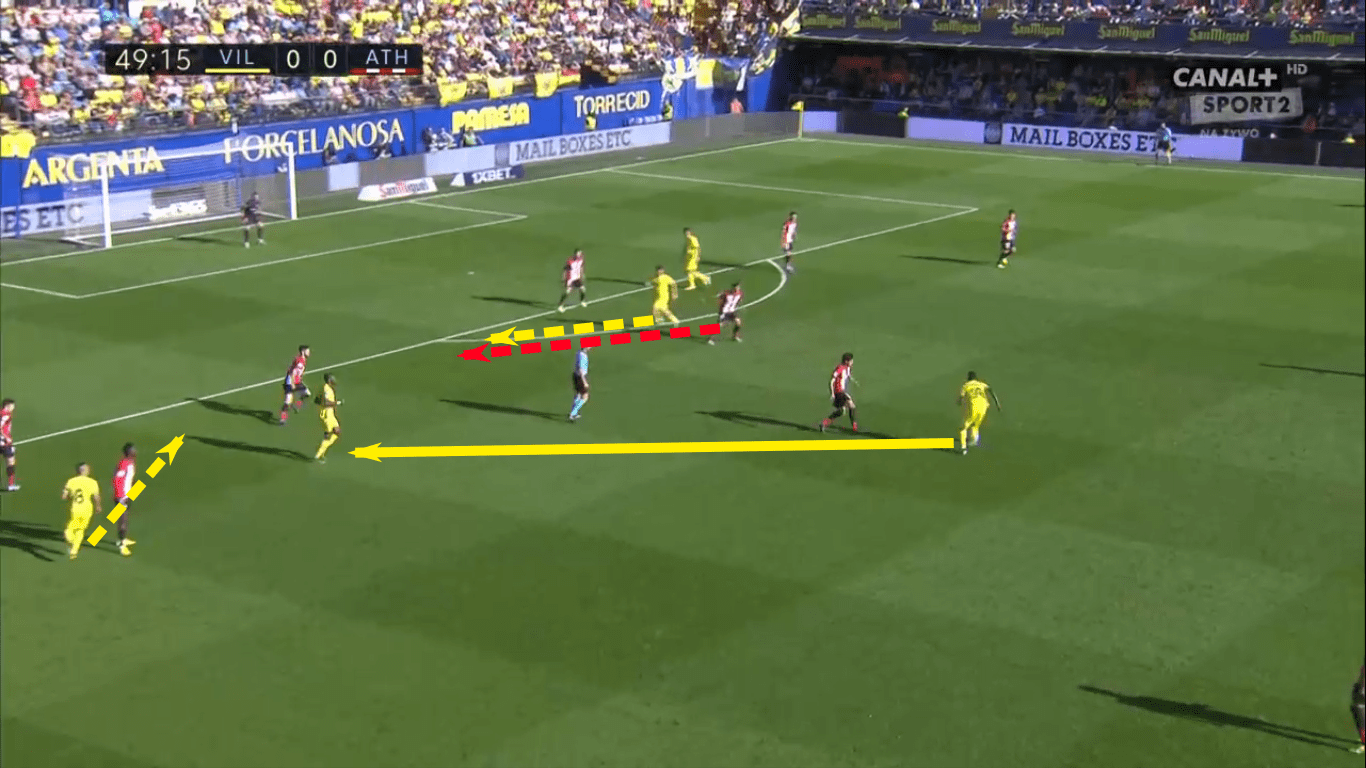
San José’s quick containment is a perfect allegory for what’s happening in this sequence. Even though Villarreal’s attacking rotations were targeting gaps, Athletic was so quick to close space and contain any penetrating threats that the windows of opportunity required perfect execution of difficult opportunities.
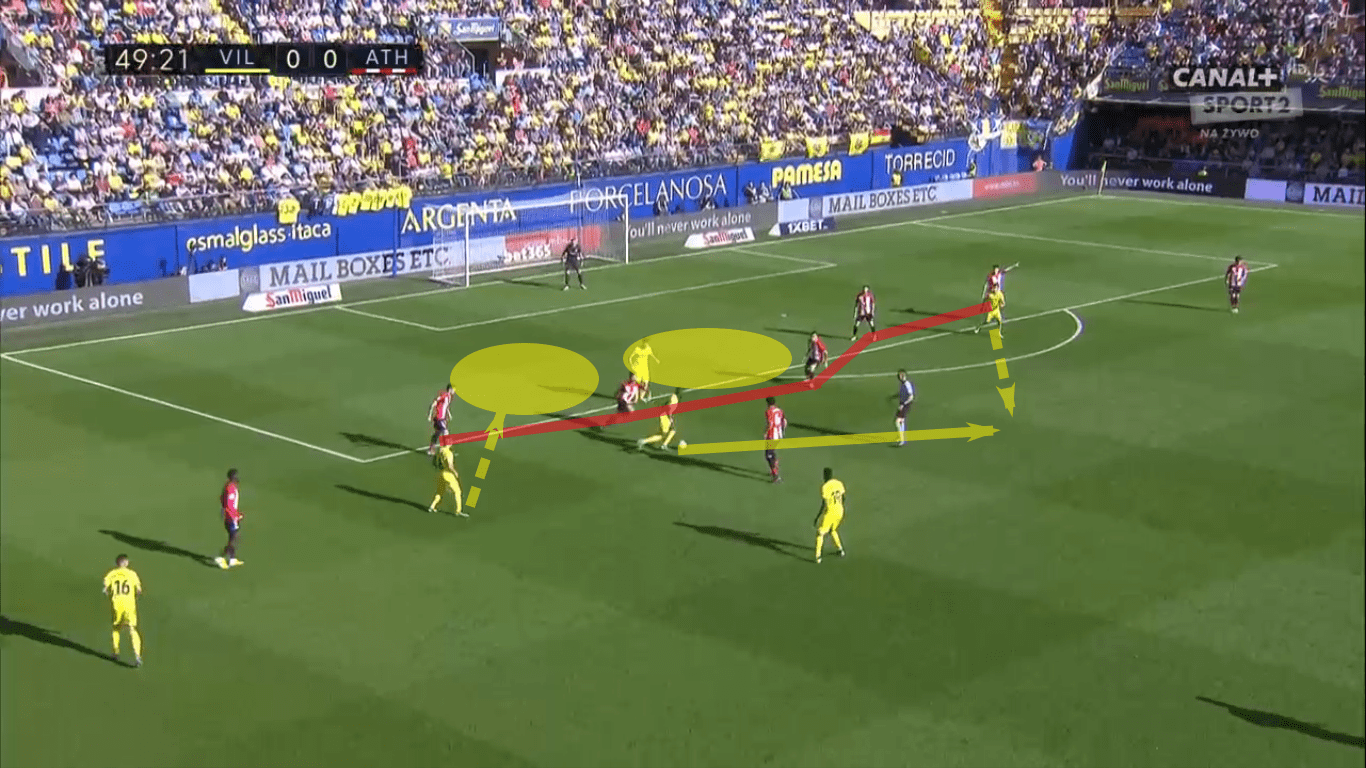
After a nice move to create a passing lane, Anguissa plays to Ekambi, who plays negative to Moreno. Álvarez did a brilliant job here to close space quickly and deny entry to Gómez.
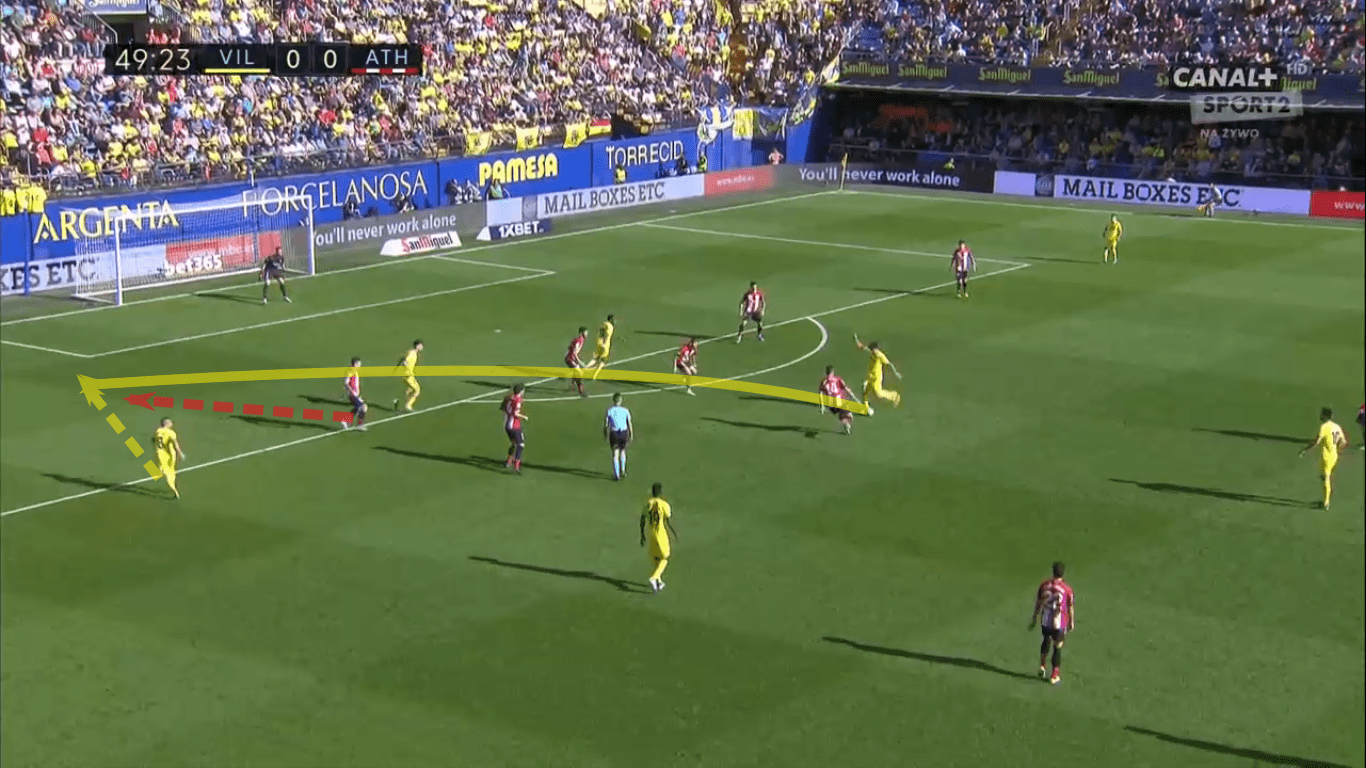
As Íñigo Martínez and Álvarez move centrally to deny entry through the middle, Ander Capa slides closer to Gómez while remaining near enough to Cazorla to contest any ball played his way.
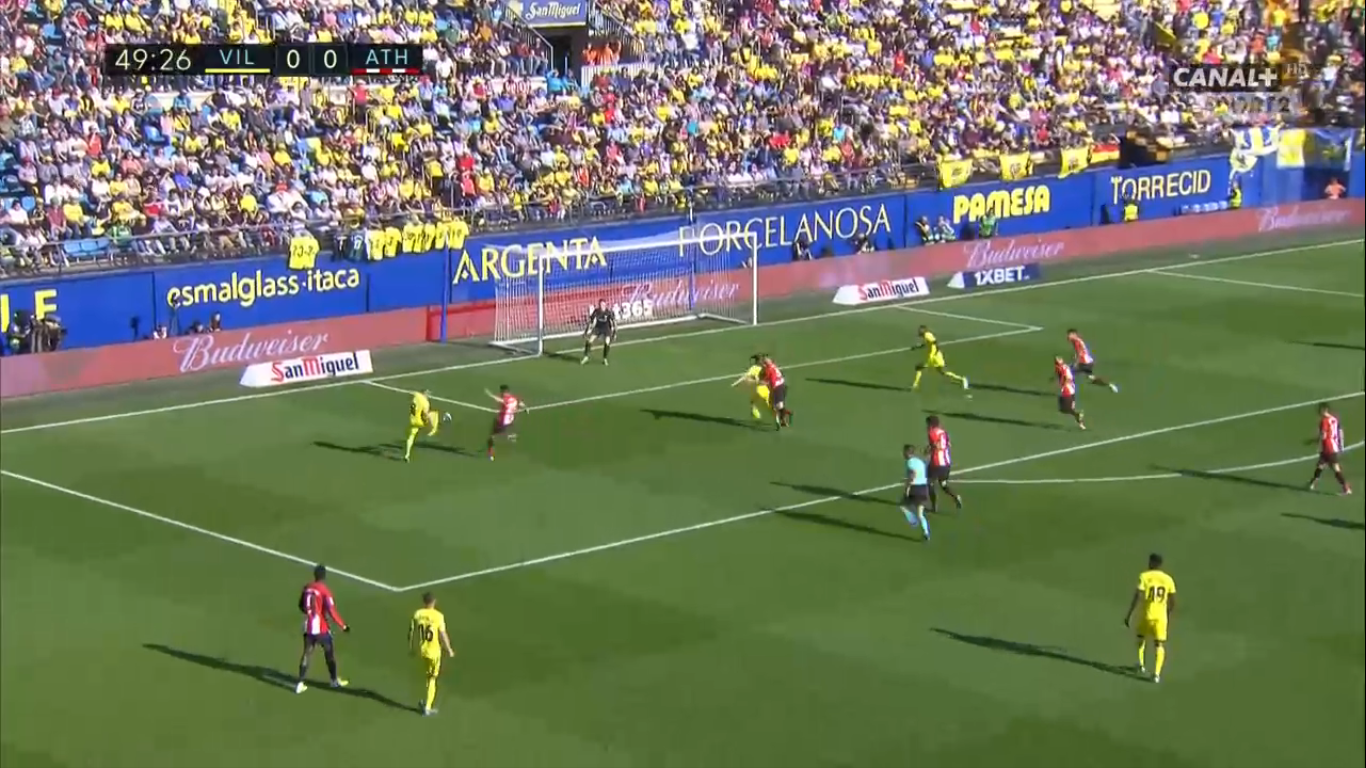
The pass does go to Cazorla. Even though Villarreal get the pass off, Athletic’s pressure ensured that it was a difficult ball in, giving Capa plenty of time to recover his ground and pressure Cazorla. Athletic’s only gaffe on this play was not properly tracking Ekambi’s run. But even there, the degree of difficulty in this cross was so high that the odds were always in Athletic’s favour. On the whole, Athletic’s defence was brilliant in containing the number of chances they conceded and keeping Villarreal to half-chances to goal.
Again, his sequence represents the most stretched Athletic was in this game. Even with as gaps started to emerge, Athletic pressured the ball quickly, denying penetrating passes. That quick pressure bought the rest of the team time to recover their defensive shape. Denying entry through the middle and forcing Villarreal to cross from the wings made their job much easier.
Conclusion
Athletic was clearly the more satisfied team, walking away from the Estadio de la Cerámica with an away point. The shutout was their sixth out of 12 league games. That said, they have plenty of issues to work out. Another goalless game means they’ve now averaged less than a goal per game (11 goals for this season). Garitano and his men will prepare for Sunday’s home fixture against Levante, who shocked Barcelona with a 3-1 win over the weekend.
Despite Athletico’s strong defensive play, Villarreal will feel they deserved more from this game. Questionable officiating aside, their set-pieces produced a few great opportunities. Failing to capitalize on those chances allowed Athletic to gradually sit further back and secure the draw. Villarreal will look to rebound against Mallorca, who suffered a heavy 3-0 defeat to Real Valladolid this past Sunday. Only three teams in La Liga have conceded more goals than Mallorca, so Villarreal should get some joy from that fixture.

If you love tactical analysis, then you’ll love the digital magazines from totalfootballanalysis.com – a guaranteed 100+ pages of pure tactical analysis covering topics from the Premier League, Serie A, La Liga, Bundesliga and many, many more. Buy your copy of the October issue for just ₤4.99 here





Comments